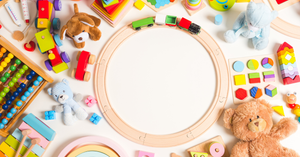Have you ever dreamed of exploring the cosmos? Well, you don't need a rocket ship to do that! With a little creativity and a few simple materials, you can bring the wonders of space right into your own home. Let's go on a cosmic journey together and discover some fun and educational space-themed science experiments.
Baking Soda Rocket
One of the most thrilling space-themed experiments is the Baking Soda Rocket. This simple yet explosive activity will have your kids jumping with excitement!
What You Need:
- 1 small plastic film canister (with a tight-fitting lid)
- 1 tablespoon of baking soda
- 1 tablespoon of vinegar
- Safety goggles
Instructions:
- Prepare the Rocket: First, put on safety goggles. This is important for safety, as the reaction can be quite vigorous!
- Add Baking Soda: Place the baking soda into the film canister.
- Add Vinegar: Quickly pour the vinegar into the canister and snap the lid on tightly.
- Launch: Place the canister lid-side down on the ground and step back. The pressure will build up in a few moments, and the canister will launch into the air!
How It Works:
This experiment demonstrates the principles of chemical reactions and pressure. The reaction between baking soda (a base) and vinegar (an acid) produces carbon dioxide gas, which builds up pressure until the lid pops off, propelling the canister into the air. It's a fantastic way to introduce concepts of force and motion!
Oreo Moon Phases
Another fun experiment is the Oreo Moon Phases activity, which combines a delicious snack with learning about the moon's phases.
What You Need:
- Oreo cookies
- A plastic knife or popsicle stick
- A plate
Instructions:
- Prepare the Cookies: Take apart the Oreo cookies so that you have one side with cream and one without.
- Model the Phases: Use the cream to represent the moon's phases. For example, leave one cookie intact for the full moon, scrape some cream off for the first quarter, and remove all the cream for the new moon.
- Discuss: As you create each phase, discuss what each phase looks like and why it occurs.
How It Works:
This activity is a tasty way to visualize the lunar phases. As the moon orbits Earth, different portions of it are illuminated by the sun, creating the phases we see from Earth. This hands-on approach helps children remember the phases while enjoying a sweet treat!
Walk the Solar System
For a more active experiment, consider the Walk the Solar System activity. This experiment helps children understand the vast distances between planets.
What You Need:
- A long tape measure or yardstick
- Chalk (for marking distances)
- A large open space (like a park)
Instructions:
- Scale Down the Solar System: Use a scale where 1 meter represents a certain distance in space (for example, 1 meter = 10 million kilometers).
- Mark the Distances: Start at one point and mark where each planet would be placed according to your scale. For instance, the distance from the Sun to Earth is about 150 million kilometers, so you would mark 15 meters for Earth.
- Walk the Distance: Once all the planets are marked, walk from the Sun to each planet, discussing facts about each one along the way.
How It Works:
This activity illustrates the vastness of space and helps children grasp the concept of scale in our solar system. It's a fun way to get moving while learning about the planets and their distances from the sun.
Galaxy Magic Milk
For a visually stunning experiment, try Galaxy Magic Milk. This activity combines art and science, creating a beautiful representation of galaxies.
What You Need:
- A shallow dish
- Whole milk
- Food coloring (various colors)
- Dish soap
- Cotton swabs
Instructions:
- Pour the Milk: Fill the shallow dish with milk until it covers the bottom.
- Add Food Coloring: Drop different colors of food coloring into the milk. Watch how they spread!
- Add Soap: Dip a cotton swab into dish soap and touch it to the milk. The colors will swirl and create beautiful patterns resembling galaxies.
How It Works:
The dish soap cracks the surface tension of the milk and interacts with the fat molecules, causing the food coloring to move and create stunning designs. This experiment is not only fun but also a great way to discuss the beauty of galaxies and the science behind emulsification.
Conclusion
By engaging in these space-themed science experiments, you're not just teaching your child about science; you're also creating cherished memories and inspiring a lifelong love for the cosmos. So grab your materials, put on your lab coats, and get ready for an out-of-this-world adventure!







